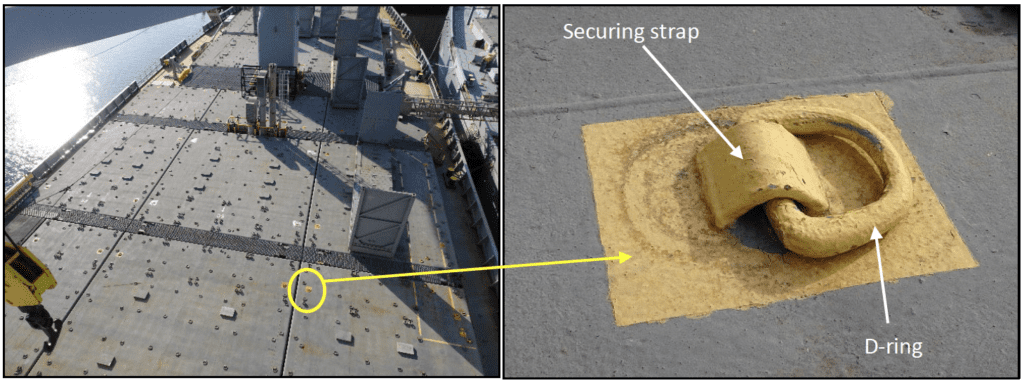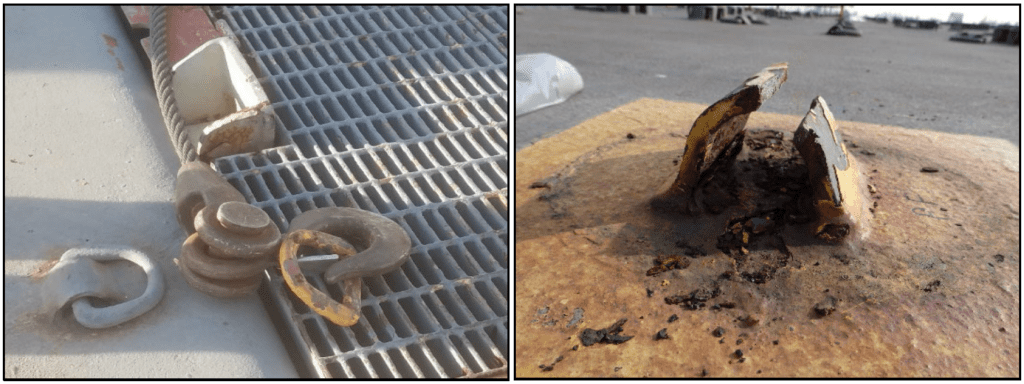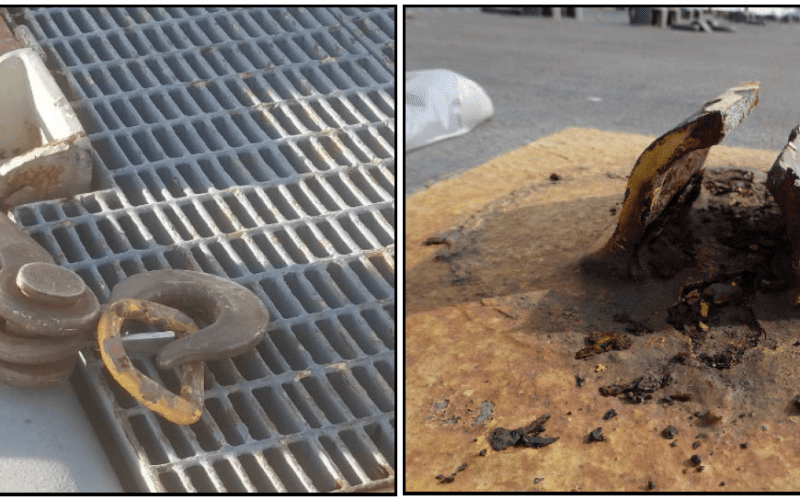(WASHINGTON) — A recent marine casualty that resulted in a severe injury to a crewmember on board a U.S.-flagged cargo vessel brought to light a dangerous and potentially fatal situation involving D-ring lifting points.
While positioning a removable hatch cover on the vessel, three of the four D-ring securing straps failed, causing an uncontrolled snapback of the lifting sling assembly that struck the crewmember in the head. The three fractured securing straps showed similar failures with a significant amount of corrosion beneath the paint and on the underside of the straps. It is likely that just one D-ring failed initially, which would have instantly doubled the load on the two adjacent corner D-rings, both of which were apparently weakened and subsequently failed.


Without proper and periodic inspection and replacement, corrosion and stress can eventually lead to deck fitting failures.
After the incident, the U.S. Coast Guard verified that the arrangement of the hatch cover lifting points were in accordance with all available drawings and design schematics. There were no records of any pull tests or other testing conducted on these lifting points since their installation in the mid-1980s. There were also no records of any D-ring replacements, indicating that these have likely been in an exterior weather deck environment for several decades.
Although there are requirements for design and in-service testing of mooring fittings and cargo-handling cranes and associated gear, there are no prescriptive periodic testing or inspection requirements for general purpose D-rings or their securing straps. Consequently, similar failures may occur in the absence of an established inspection and maintenance program.
The Coast Guard strongly recommends that vessel owners, operators, and other maritime stakeholders:
• Immediately identify high-risk D-rings and similar lifting-point fittings. High-risk factors include age, weather exposure and lifting load. These factors will cumulatively cause corrosion losses on the fitting, increasing its stress and fatigue vulnerability during each lifting cycle.
• Thoroughly inspect all high-risk lifting points for damage, hidden corrosion and wastage. Audio gauging, pull testing or even replacement may be appropriate.
• Consult with the manufacturer’s instructions to ensure safe lifting limits are in place and that the effects of service life are considered in their determination.
• Establish a maintenance schedule for periodically inspecting all lifting points and audio gauging or testing any fittings as they age into high-risk status.
Marine inspectors, investigators, and surveyors are encouraged to maintain an acute awareness of these issues and initiate corrective actions as needed.
This safety alert is provided for informational purposes only and does not relieve any domestic or international safety, operational or material requirement. Developed by investigators at U.S. Coast Guard Sector Maryland-National Capital Region and distributed by the Office of Investigations and Analysis. Questions may be sent to HQS-SMB-CGINV@uscg.mil.
– U.S. Coast Guard

